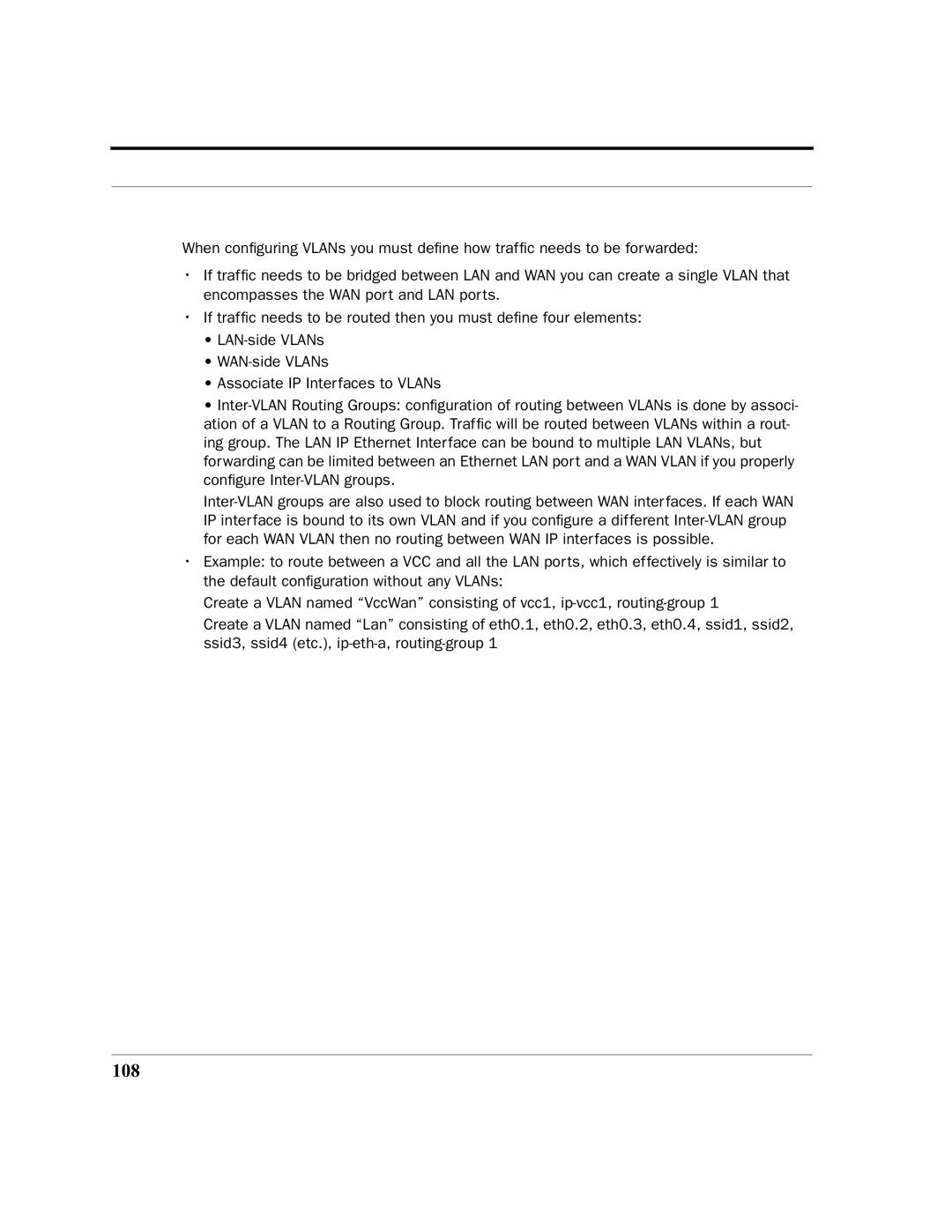
When configuring VLANs you must define how traffic needs to be forwarded:
•If traffic needs to be bridged between LAN and WAN you can create a single VLAN that encompasses the WAN port and LAN ports.
•If traffic needs to be routed then you must define four elements:
•
•
•Associate IP Interfaces to VLANs
•
•Example: to route between a VCC and all the LAN ports, which effectively is similar to the default configuration without any VLANs:
Create a VLAN named “VccWan” consisting of vcc1,
Create a VLAN named “Lan” consisting of eth0.1, eth0.2, eth0.3, eth0.4, ssid1, ssid2, ssid3, ssid4 (etc.),
